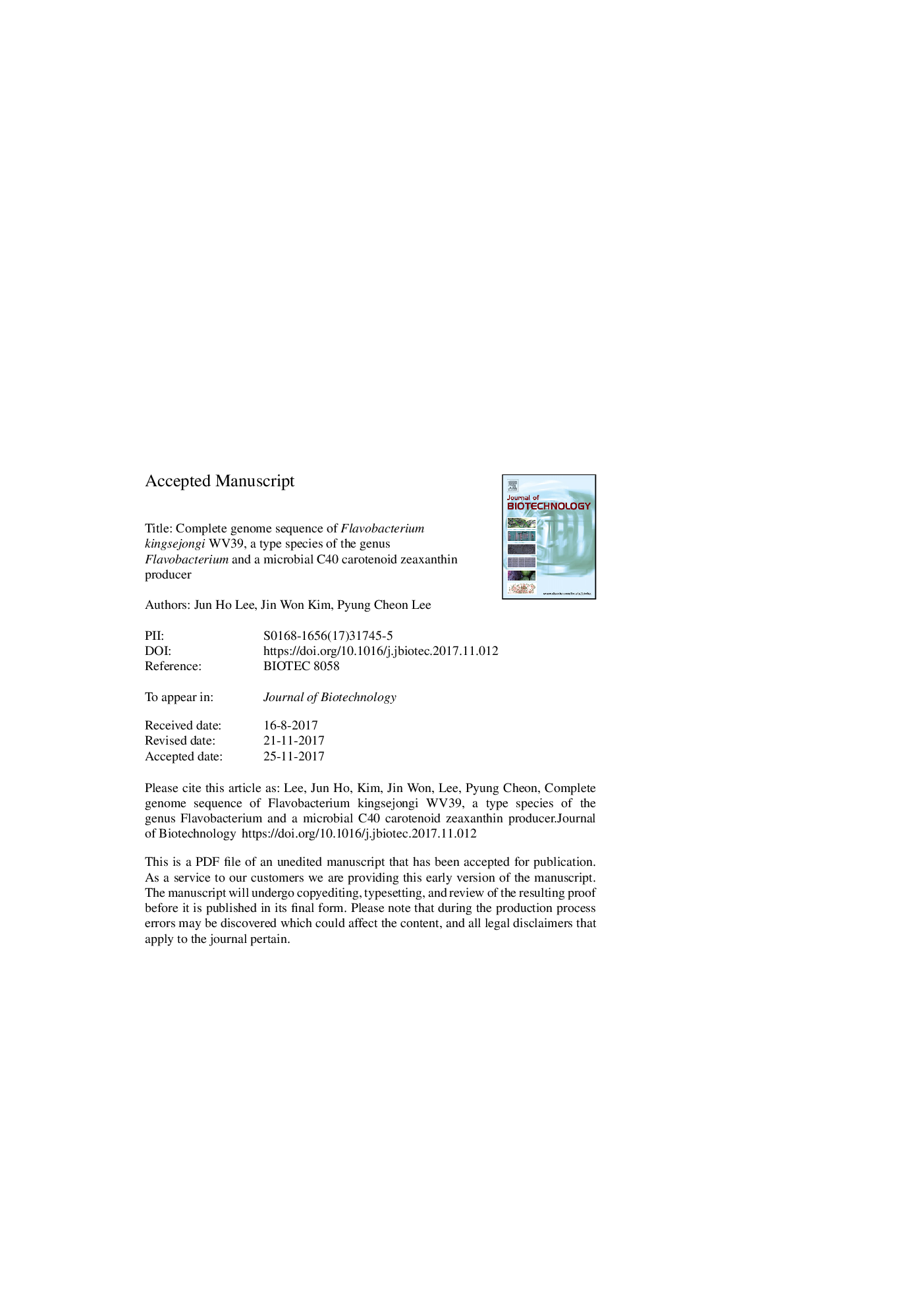| Article ID | Journal | Published Year | Pages | File Type |
|---|---|---|---|---|
| 6490411 | Journal of Biotechnology | 2018 | 17 Pages |
Abstract
A novel species, Flavobacterium kingsejongi WV39, isolated from feces of Antarctic penguins and a type species of the genus Flavobacterium, is yellow because it synthesizes a C40 carotenoid zeaxanthin. The complete genome of F. kingsejongi WV39 is made up of a single circular chromosome (4,224,053 bp, 39.8% G + C content). Annotation analysis revealed 3,955 coding sequences, 72 RNAs (18 rRNA + 54 tRNA), and five genes involved in zeaxanthin biosynthesis. The key gene encoding β-carotenoid hydroxylase (CrtZ), which is the last enzyme in the zeaxanthin biosynthetic pathway, was cloned and subjected to complementary analysis in a heterologous E. coli strain. The CrtZ of F. kingsejongi WV39 showed a higher activity than other reported CrtZs.
Keywords
Related Topics
Physical Sciences and Engineering
Chemical Engineering
Bioengineering
Authors
Jun Ho Lee, Jin Won Kim, Pyung Cheon Lee,
